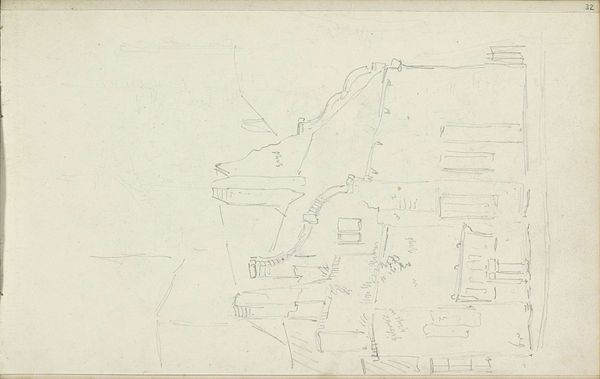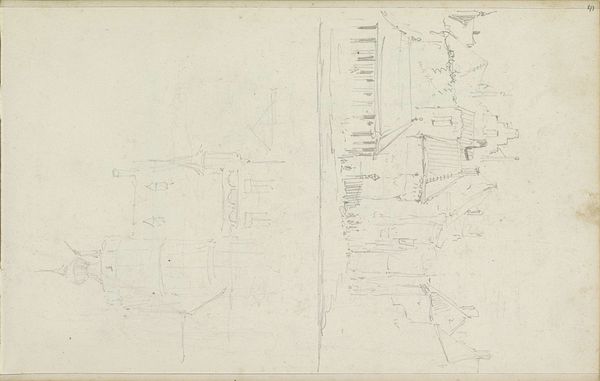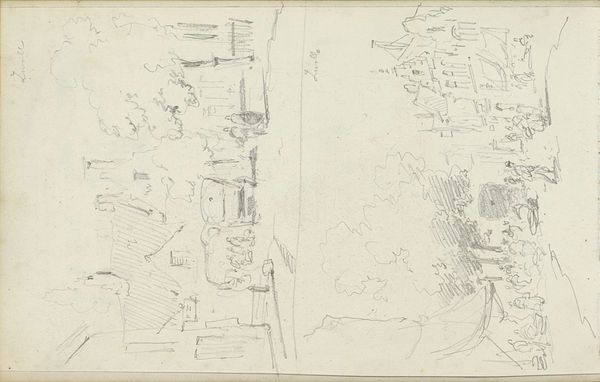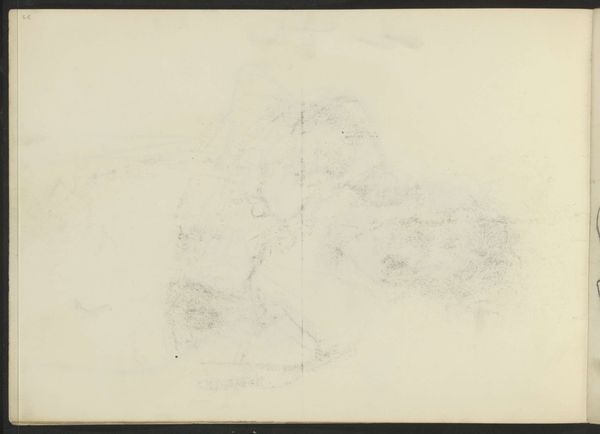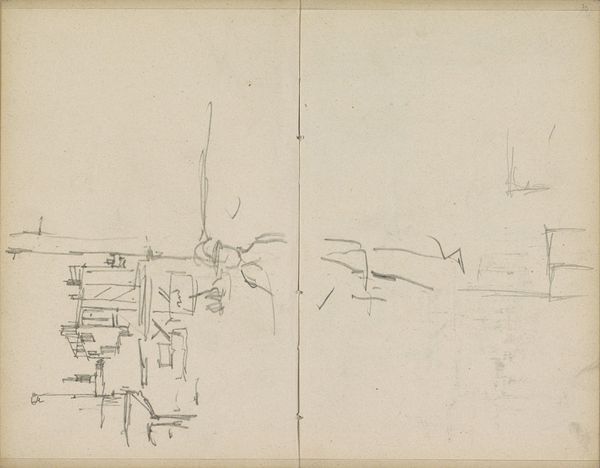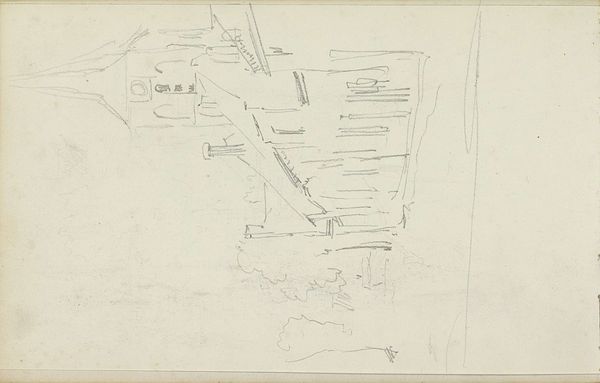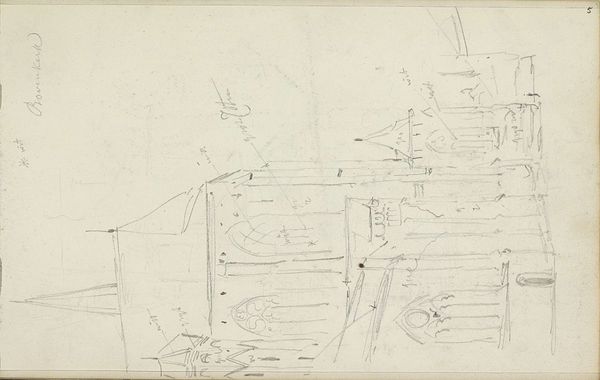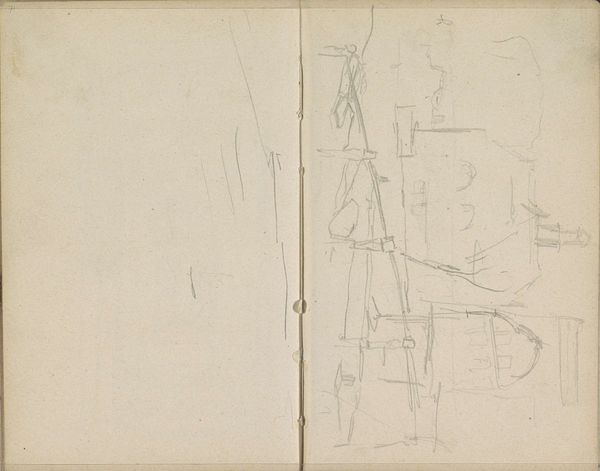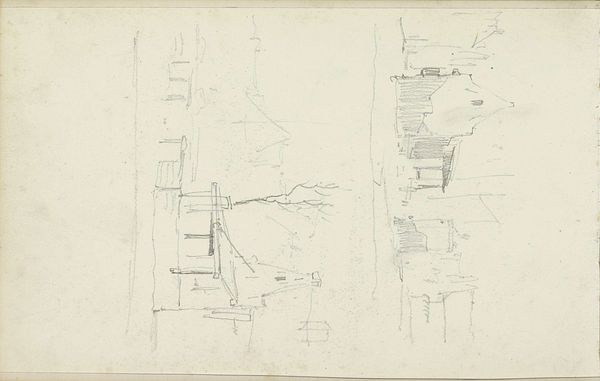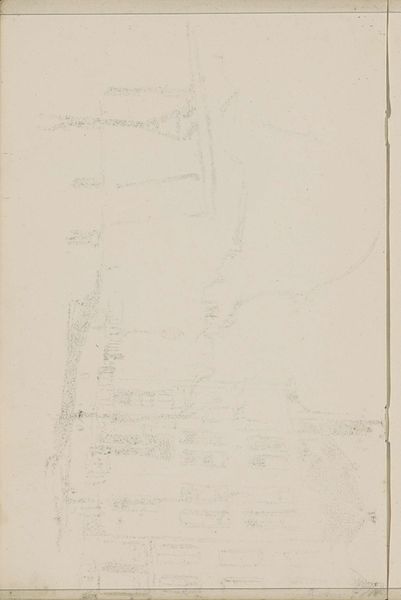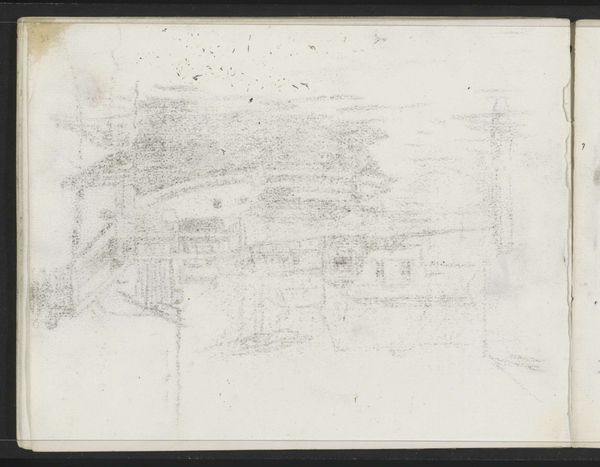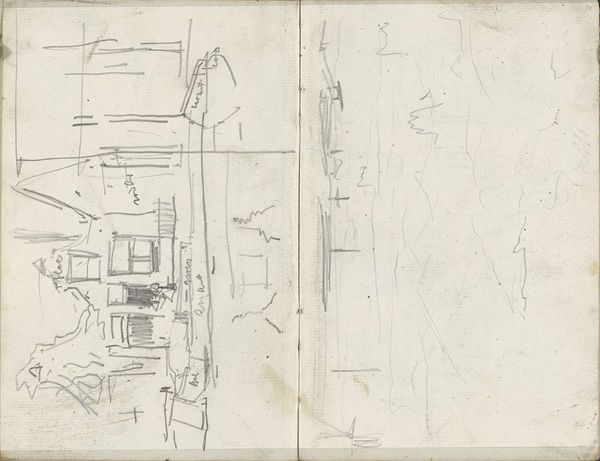
Twee stadsgezichten in Kampen, met het stadhuis en de Koornmarktspoort c. 1828 - 1897
0:00
0:00
drawing, paper, pencil
#
drawing
#
dutch-golden-age
#
landscape
#
paper
#
pencil
#
cityscape
#
genre-painting
#
realism
Copyright: Rijks Museum: Open Domain
Curator: Here we have Adrianus Eversen’s “Twee stadsgezichten in Kampen, met het stadhuis en de Koornmarktspoort,” a pencil drawing on paper dating approximately from 1828 to 1897. Editor: There’s a ghostly quality about this work, the lines are so delicate. Almost as if we're looking at faded memories rather than architectural structures. You can really see the tool’s movement, and how Eversen carefully plotted those perspectival lines. Curator: Yes, the Dutch Golden Age saw a rise in genre painting, and Eversen certainly played a role in perpetuating that tradition into the 19th century with these kinds of cityscapes, but from my perspective I see this more as a social document. Look how he presents the grandeur of the stadhuis, positioning civic architecture front and center. It speaks to the importance Kampen placed on governance and community. Editor: I see that, but my eye is drawn to the rapid, almost hurried quality of the execution. It suggests a work that prioritizes the making—the labor of seeing and representing. He is less invested in idealizing Kampen and more focused on process and a certain type of realism that's about conveying something very direct and in the moment, wouldn’t you say? Curator: That immediacy is compelling. It draws the viewer closer to the tangible reality of 19th-century Dutch life and what citizens of Kampen were interacting with in terms of government buildings or social hierarchies. It's like seeing history unfold through his sketches, right? Editor: I’m struck by the flatness, especially for cityscapes so committed to accuracy of perspective. And that use of pencil—accessible, portable, utilitarian—is so aligned with how artists would use sketches at the time as a visual recording tool. Curator: Well, thinking about Eversen’s choices in terms of his drawing practices, he created something more than a snapshot of his town, and provided something that now functions as a historic record. He depicted a society undergoing its own transformation, through rapid industrialization as society began to morph into a fully globalized culture. These quiet cityscapes suddenly offer an insight into social change. Editor: Absolutely. To me, it demonstrates that the most seemingly straightforward choices, like drawing rather than painting, pencil rather than charcoal, reveals so much about an artwork's relationship to the cultural landscape. Curator: This brief stop certainly underscores how deeply historical and material considerations are interwoven in viewing artwork, even in an understated sketch like this. Editor: Indeed, I think we've given people a great introduction.
Comments
No comments
Be the first to comment and join the conversation on the ultimate creative platform.
